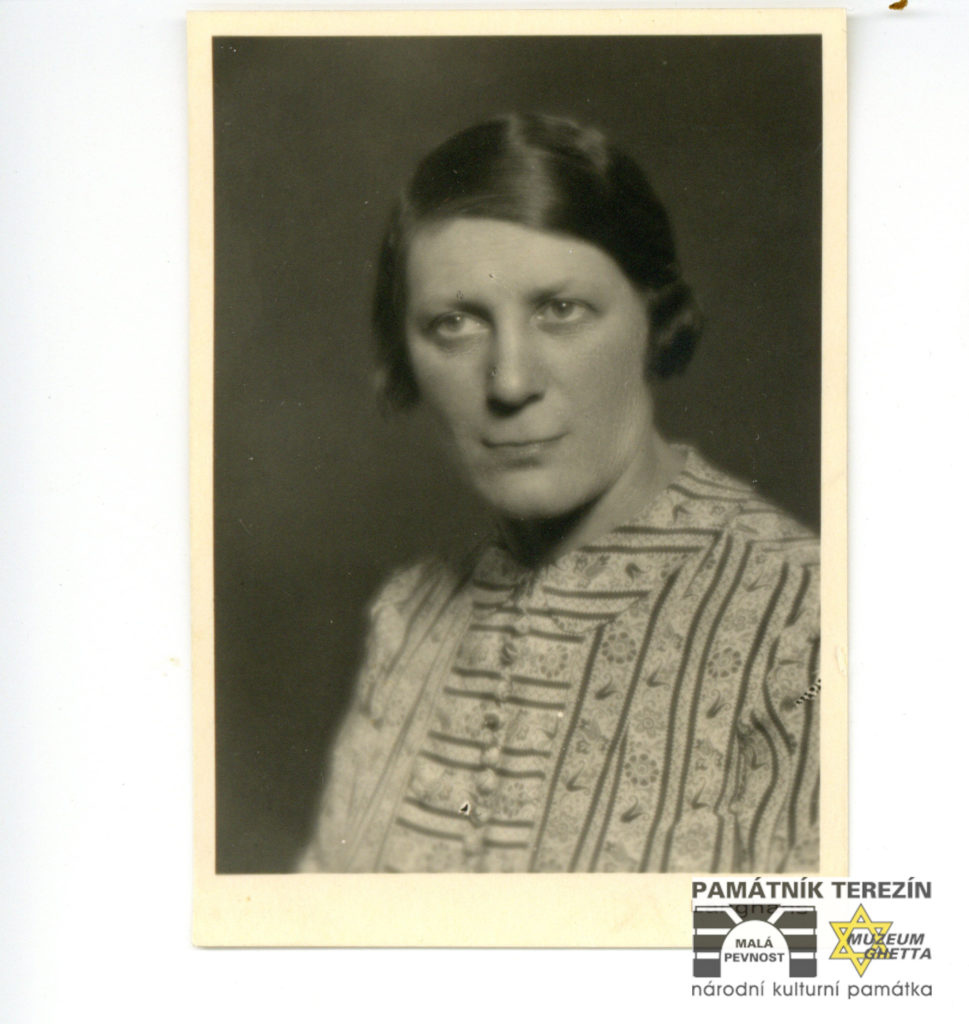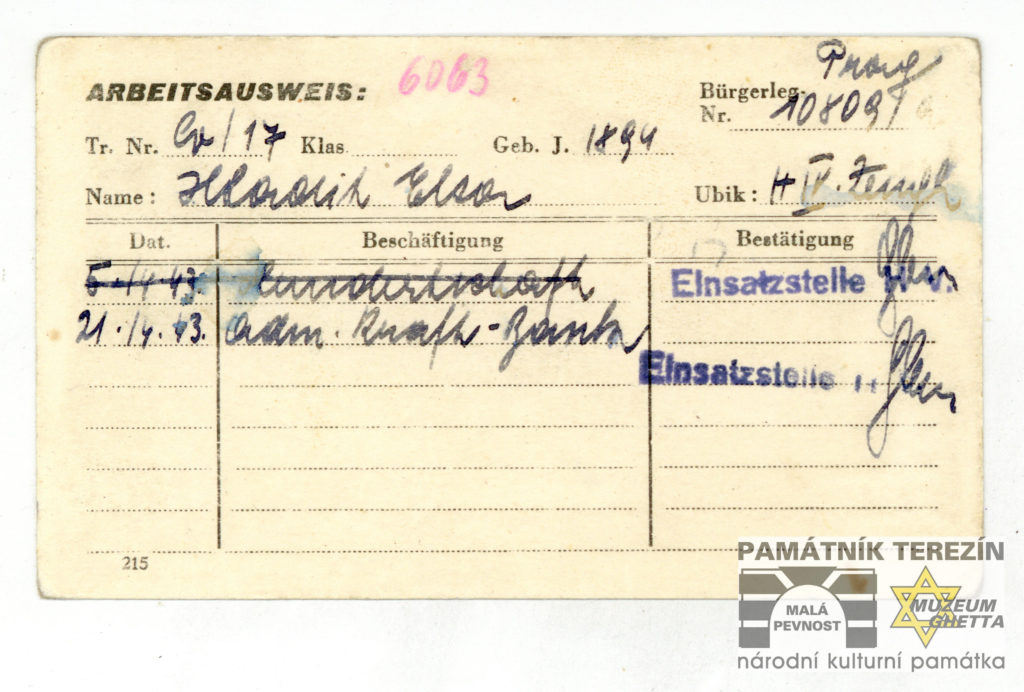In 2019 the Department of Documentation of the Terezin Memorial entered in its collection 21 new inventory numbers, comprising a total of 323 individual items. Approximately two thirds of the documents were acquired by gift, the rest by purchase.
The Terezín Memorial has also obtained by gift the estate of Else Hladíková; the donor was her grandson. This contains 19 documents from the years 1943 to 1946, e.g. work cards, passes, a savings bank book, ration cards, meal vouchers, and a summons to report for transport, or postwar certificate on deportation. A photograph of Else Hladíková, taken at the turn of the 1930s and 40s, is also in the dossier.

According to the database of inmates Else Hladíková (born at Žalov on April 9, 1894) arrived in Terezín on March 6, 1943 from Prague in transport No. Cv 17 and lived in the Ghetto until its liberation.
The first of the two extant work cards of Else Hladíková shows that starting on April 5, 1943 she worked in the so-called Hundertschaft commando. As a rule, each new inmate, aged between 16 and 60 years and subjected to labor duty, had to be assigned to this labor commando. Its members performed various one-off jobs as need be.
According to another entry, dated April 21, 1943, Else Hladíková was assigned as clerical staff to the Bank of the Jewish Self-administration whose operation was launched in the Ghetto in May 1943.
In addition to entries on labor deployment, the above-mentioned work card also contained Else Hladíková´s personal data, among other information, the name of her dormitory – H IV. A former arsenal (Zeughaus) used to be located in one part of this block, which explains the abbreviation (Zeugh) added after the name of the dormitory. Other documents in the dossier show that Else had to move several times in the Ghetto.
The second work card of Else Hladíková, issued on April 5, 1944, indicates that its owner still worked in the Bank of the Jewish Self-administration in the same position.
Two preserved passes, allowing Else Hladíková to leave her dormitory after 8 p.m. for working reasons, are also connected with her job. The two passes cover the period from December 7, 1944 to May 9, 1945 and in both cases involve her work in the bank.

In addition to her summons to a transport, the documents also contain a slip on submitting her luggage before transport. These documents attest to the fact that during her imprisonment in the Ghetto Else Hladíková was assigned to one of the Eastern transports. But the documents do not make it clear which particular transport was involved, or in which way she had been reclaimed from the transport.
As for the postwar era, the documents include Else´s letter written to her relatives and dated May 21, 1945, in which she discussed her departure from Terezín where she had to stay because of the quarantine declared due to a typhoid epidemic. She also wrote about her future, about her future dwelling, whether she would get her previous job in a Prague bank. She also wrote in part: ”…the most important thing is to get away from here and be human again.“ She left Terezín by the end of May 1945.
Ne


